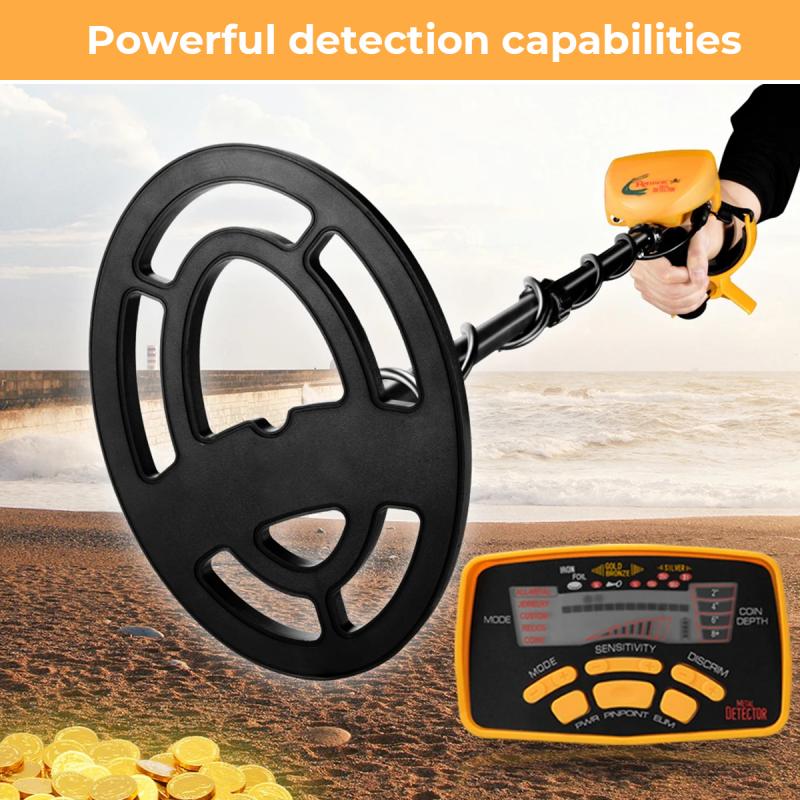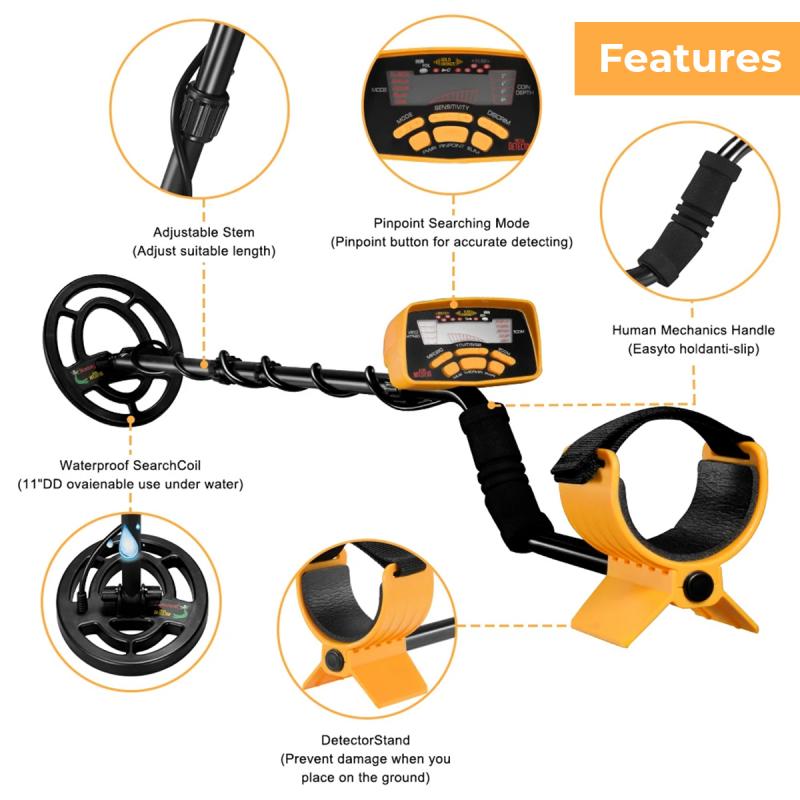How Far Down Can A Metal Detector Detect?
Metal detectors are fascinating devices that have captured the interest of hobbyists, treasure hunters, and professionals alike. They are used in a variety of applications, from finding lost coins and jewelry to locating underground utilities and even in security settings. One of the most common questions asked by users is, "How far down can a metal detector detect?" This question is crucial for anyone looking to invest in a metal detector, as the depth capability can significantly impact the effectiveness of the device for specific tasks. In this article, we will explore the factors that influence the depth detection capabilities of metal detectors, the types of metal detectors available, and practical tips for maximizing their performance.
Factors Influencing Depth Detection

Several factors influence how deep a metal detector can detect objects. Understanding these factors can help users make informed decisions and optimize their metal detecting activities.
1. Type of Metal Detector
There are different types of metal detectors, each designed for specific purposes and with varying depth capabilities. The most common types include:
- Very Low Frequency (VLF) Detectors: These are the most popular and versatile metal detectors. They are excellent for detecting small objects like coins and jewelry at shallow to moderate depths, typically up to 12 inches.
- Pulse Induction (PI) Detectors: These detectors are known for their ability to detect objects at greater depths, often up to several feet. They are less affected by mineralization in the soil, making them ideal for beach and underwater detecting.
- Multi-Frequency Detectors: These detectors operate on multiple frequencies simultaneously, providing a balance between depth and sensitivity. They are suitable for a wide range of detecting conditions and can detect objects at depths similar to VLF detectors.
2. Size and Composition of the Object
The size and material of the object being detected play a significant role in how deep a metal detector can detect it. Larger objects can be detected at greater depths compared to smaller ones. Additionally, objects made of highly conductive metals like silver and copper are easier to detect than those made of less conductive materials like stainless steel.
3. Soil Conditions
Soil composition and mineralization can greatly affect a metal detector's depth capabilities. Highly mineralized soils can interfere with the detector's signals, reducing its effectiveness. Conversely, low-mineralization soils allow for deeper detection. Wet soil can also enhance detection depth due to its increased conductivity.
4. Detector Settings
The settings on a metal detector, such as sensitivity and discrimination, can impact its depth detection. Higher sensitivity settings can increase depth but may also result in more false signals. Discrimination settings help filter out unwanted metals but can also reduce depth if set too high.
5. Coil Size and Type
The size and type of the search coil on a metal detector influence its depth capabilities. Larger coils can detect objects at greater depths but may sacrifice sensitivity to smaller objects. Conversely, smaller coils are more sensitive to small objects but have limited depth range. There are also specialized coils, such as double-D coils, that offer a good balance between depth and sensitivity.
Practical Tips for Maximizing Depth Detection

To get the most out of your metal detector and maximize its depth detection capabilities, consider the following tips:
1. Choose the Right Detector for Your Needs
Selecting the appropriate metal detector for your specific needs is crucial. If you are searching for small objects like coins and jewelry, a VLF detector may be sufficient. For deeper searches, such as relic hunting or gold prospecting, a PI detector might be more suitable.
2. Optimize Detector Settings
Adjust the sensitivity and discrimination settings on your metal detector to find the right balance between depth and accuracy. Start with moderate settings and gradually increase sensitivity while monitoring for false signals. Use discrimination settings to filter out unwanted metals without compromising depth.
3. Use the Appropriate Coil
Choose a search coil that matches your detecting goals. For general detecting, a medium-sized coil is a good choice. For deeper searches, consider using a larger coil. If you are searching in highly mineralized soil, a double-D coil can help reduce interference and improve depth.
4. Understand Soil Conditions
Be aware of the soil conditions in your detecting area. If you are dealing with highly mineralized soil, consider using a PI detector or adjusting your VLF detector's ground balance settings. In wet conditions, take advantage of the increased conductivity to enhance depth detection.
5. Practice Proper Swing Technique
The way you swing your metal detector can impact its performance. Keep the coil close to the ground and maintain a consistent speed. Overlapping your swings ensures that you cover the area thoroughly and increases the chances of detecting deeper objects.
Real-World Applications and Depth Expectations

Understanding the depth capabilities of metal detectors is essential for various real-world applications. Here are some common scenarios and what users can typically expect in terms of depth detection:
1. Coin and Jewelry Hunting
For coin and jewelry hunting, VLF detectors are often the preferred choice. These detectors can typically detect coins and small jewelry items at depths of up to 12 inches. In ideal conditions, such as low-mineralization soil, some high-end VLF detectors can reach depths of up to 15 inches.
2. Relic Hunting
Relic hunters often seek larger objects buried deeper in the ground. PI detectors are well-suited for this purpose, with the ability to detect objects at depths of several feet. In favorable conditions, relic hunters can expect to find larger items like old tools, weapons, and artifacts at depths of up to 3-4 feet.
3. Gold Prospecting
Gold prospecting requires specialized detectors capable of detecting small gold nuggets in mineralized soil. PI detectors are commonly used for this purpose due to their ability to penetrate mineralized ground. Depending on the size of the gold nugget, these detectors can detect at depths ranging from a few inches to several feet.
4. Beach and Underwater Detecting
Beach and underwater detecting present unique challenges due to saltwater and mineralization. PI detectors are ideal for these environments, offering excellent depth capabilities. Users can expect to detect objects like coins, jewelry, and relics at depths of up to several feet in wet sand and underwater.
The depth detection capabilities of metal detectors depend on various factors, including the type of detector, the size and composition of the object, soil conditions, detector settings, and coil size. By understanding these factors and optimizing your metal detecting techniques, you can maximize the performance of your metal detector and increase your chances of finding valuable objects. Whether you are a hobbyist, a treasure hunter, or a professional, knowing how far down your metal detector can detect will help you make the most of your detecting adventures.

There are no comments for this blog.